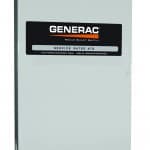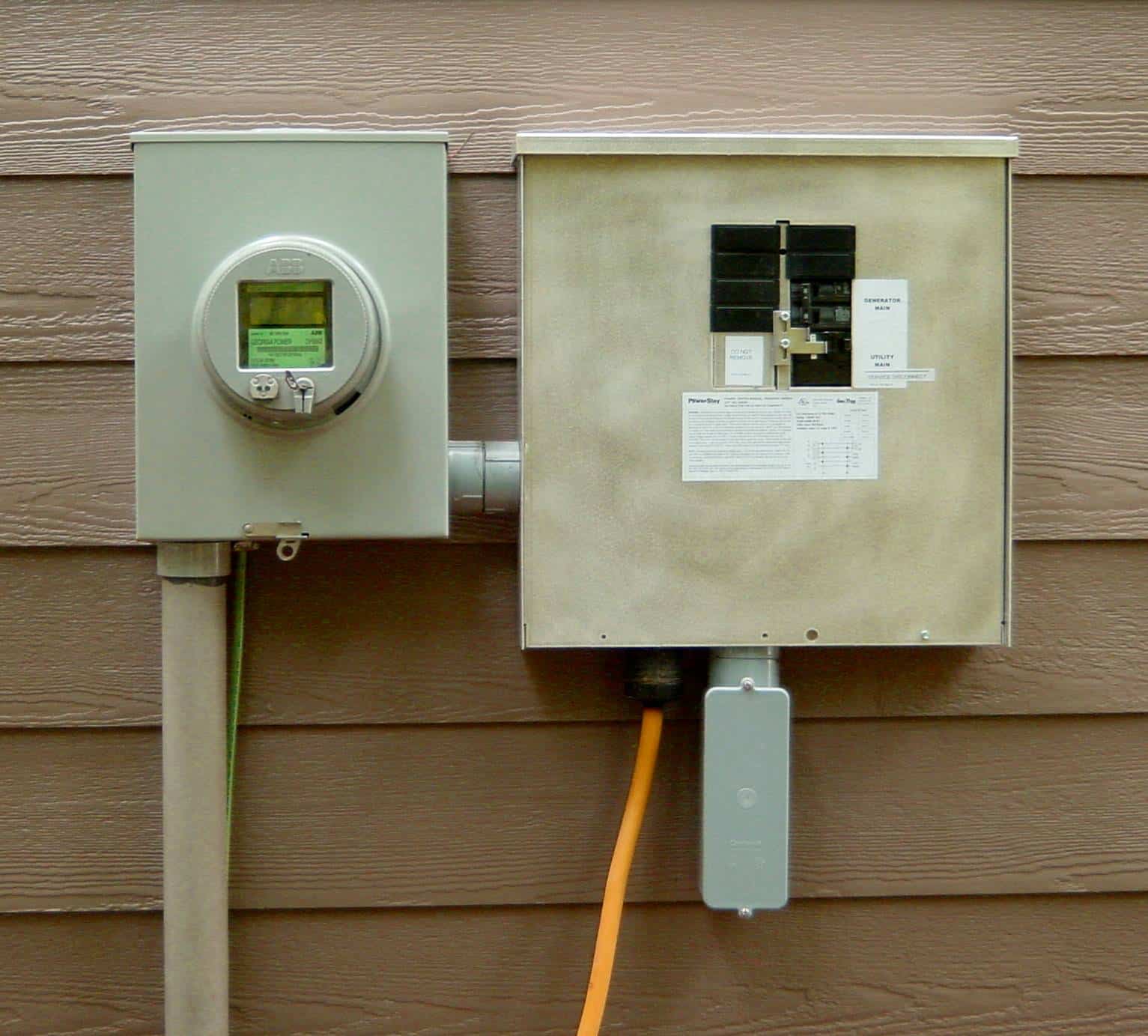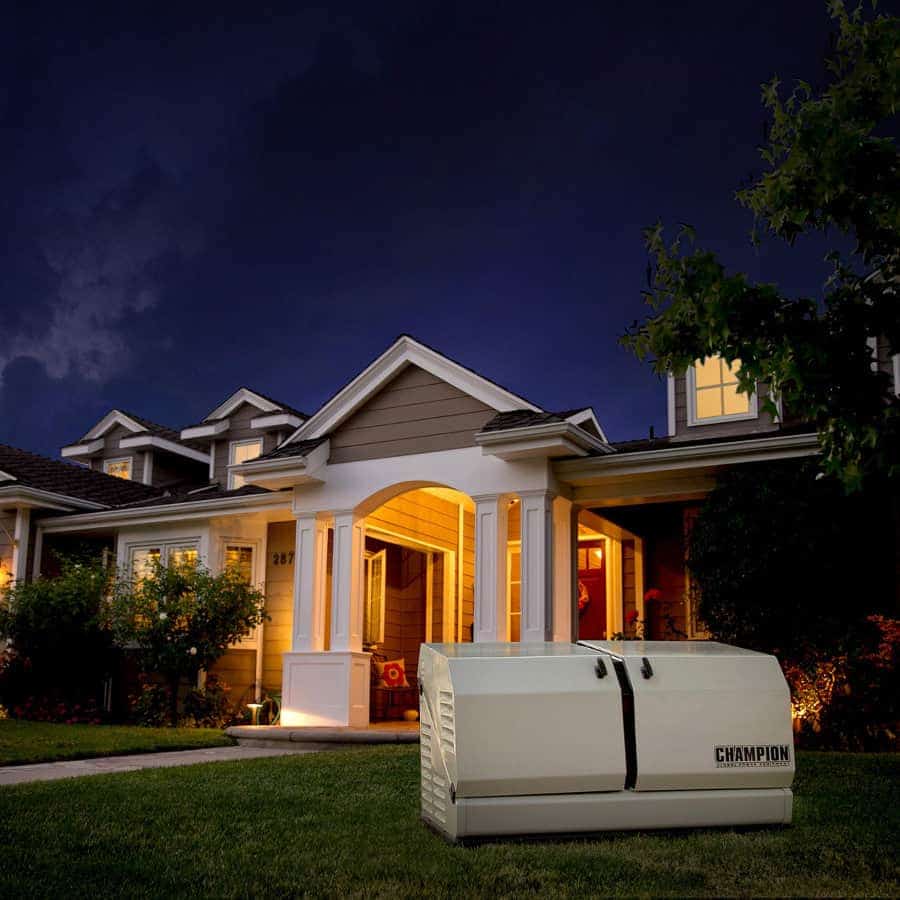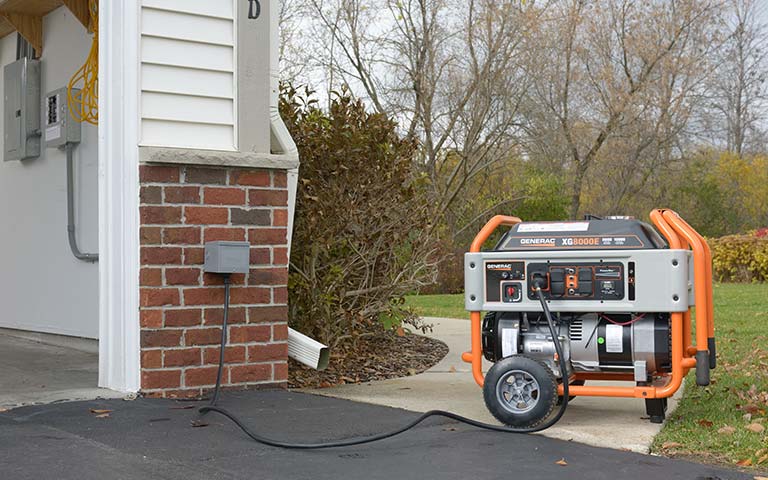Most of the time, your home is connected to the electric utility. Wires from a transformer carry electrical current to your home, through a meter and into your circuit breaker panel. When the power goes out, those wires no longer carry current.
Some people use small, portable generators to provide the most essential appliances intheir homes with electrical power. The appliances plug into heavy duty extension cords, which are plugged into the generator. This works well for two or three appliances and is one way to use a small generator in an emergency.
Appliances such as furnaces and central air conditioners don’t have a cord with a plug and the extension cord method won’t work for them. And, if you need to power more than few items, the extension cord method becomes clumsy with cords running everywhere. This also increases the chance that a damaged cord will deliver a dangerous shock or possibly start a fire.
A better method of supplying power to a home from a generator is a transfer switch.
The Transfer Switch

Generac Nexus Smart Switches are designed to operate with the Nexus controller used on air-cooled and liquid-cooled QT series.
A transfer switch is similar to a circuit breaker box. The box contains a circuit breaker for each circuit in the home that connects to it. Instead of a main breaker, the box contains a switch. During times of normal power supply, the box feeds the essential electrical circuits from the circuit breaker panel.
When the power goes out, the transfer switch changes the source of electricity from the utility company to your generator. An automatic switch will do this automatically. A manual switch requires you to make the change.
Standby generators are used with automatic transfer switches. When the power goes out, the generator starts up, usually within ten to thirty seconds. The automatic transfer switch connects the generator to the house and the circuits connected to it will operate as normal. The circuits not connected to the transfer switch will not work.
A Manual transfer switch for portable generator makes a safe connection to the home without running extension cords. A special cord plugs into the generator and into the transfer switch. After the generator is started, the switch is moved to the generator and the circuits connected to the switch receive power.
Advantages
The automatic transfer switch will start your standby generator without intervention. If the power goes out when you’re away, you won’t worry about food spoiling or sump pumps failing, and in the winter, your house remains warm and the pipes won’t freeze.
Both manual and automatic transfer switches maintain the integrity of your home’s grounding system, which makes using your generator safer. You won’t have extension cords to trip over or pinch in a window.
Most importantly, transfer switches distribute your generated power through circuit breakers which protect your home’s wiring and the devices they connect to. Even if a particular appliance is not served by the transfer switch, you can still plug it into a circuit that has generator power―as long as you don’t exceed the generators capacity.
Managing Power with Transfer Switches

Generac’s EZ Switch is the answer for homeowner who choose to back up selected circuits rather than an entire house.
Enter the smart transfer switch. Modules for high voltage devices allow the transfer switch to monitor and manage power use. If two air conditioners try to start at the same time, the transfer switch makes one wait while the other one runs, then allows it to start when the first device shuts off.
Another option is called load shedding. Essential circuits receive power at all times, but if there is extra power available, the remaining circuits in the house receive power. If the generator approaches capacity, the non-essential circuits are shut off.
There are a wide range of generators for sale at Norwall Powersystems that come equipped with integrated transfer switches or can have transfer switches easily installed. See what your options are today.
















